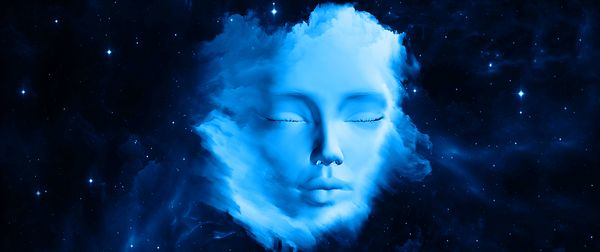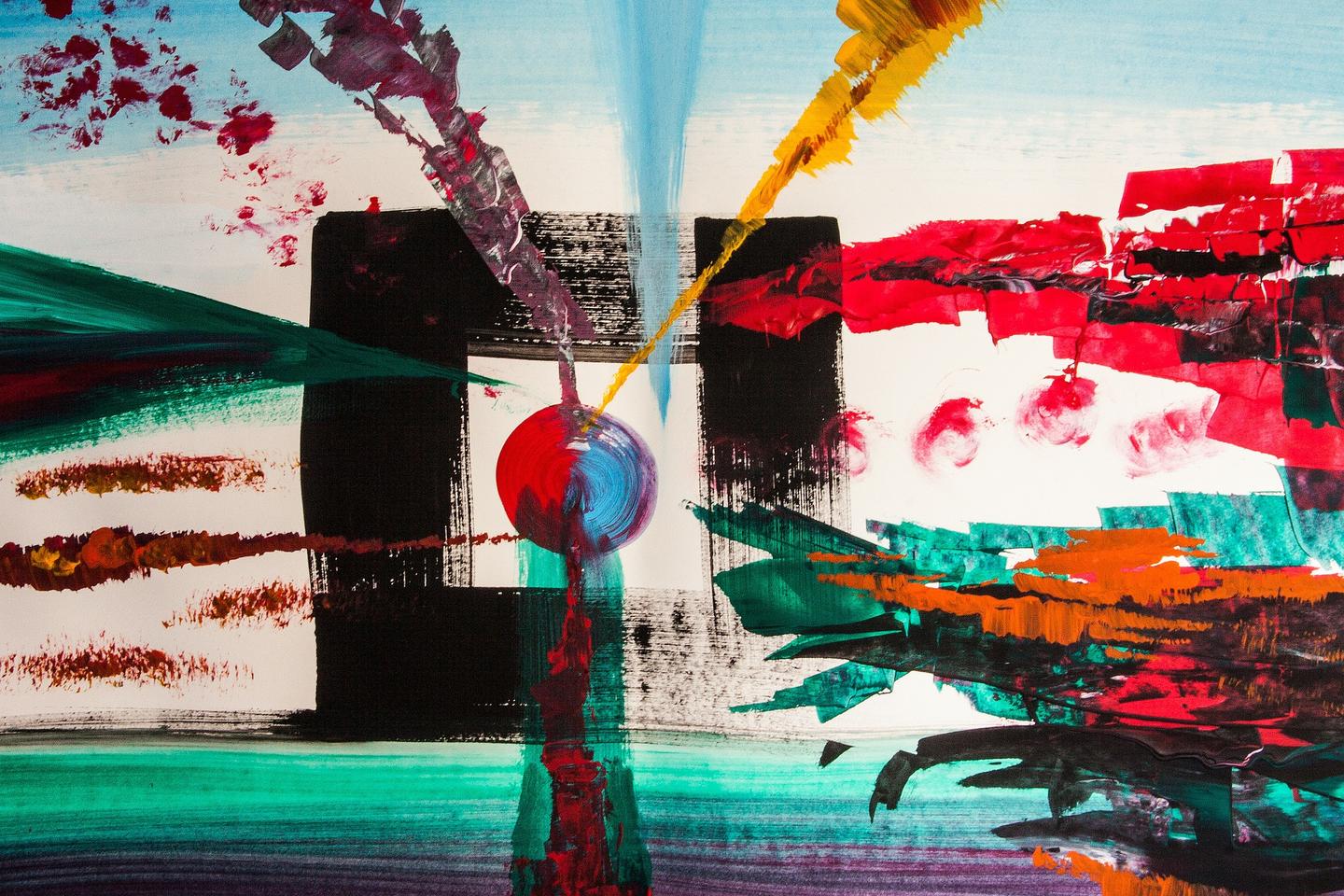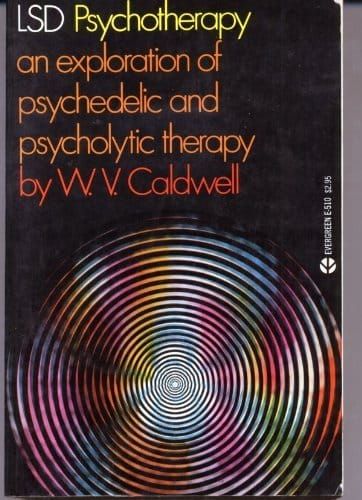Eric Brown • • 13 min read
The Dose Will See You Now: The Astonishing Life-Saving Potential of Psychedelic Therapy in Modern Medicine

What is your impression after reading the results of this recent study on the potential of a promising new treatment for depression?
‘The main takeaway is that the effects are well-tolerated in this population, and not just that—the antidepressant potential of the treatment seems to be pretty considerable,’ […] ‘All 12 of the patients reported a reduction in the severity of their depression for one week after the psilocybin experience, and for most this was true after three months. At week one, eight patients met standard criteria for remission, with five remaining in remission at three months.’
Encouraging results, no? On the surface, it seems like more people could benefit from a treatment like this.
Unfortunately, at this point in time, they can’t. They’d be considered criminals, for the chosen treatment in this study is currently illegal. In fact, it’s a Schedule 1 substance as classified by the DEA, with “no accepted medical value,” “a lack of accepted safety for use under medical supervision,” and “a high potential for abuse”.
The study was conducted using psilocybin, the active ingredient in magic mushrooms, when given to patients suffering from treatment-resistant depression.
Despite seeing encouraging results such as the above study more frequently, psychedelic therapy remains a taboo topic in both general society and the medical community at large, partially due to the many myths still surrounding the psychedelic experience.
Why is this the case? Let’s dig deeper.
What Is Psychedelic Therapy?
Psychedelic-assisted psychotherapy offers us an unparalleled medical opportunity. Currently, it is typically reserved for ‘treatment-resistant’ illnesses (when standard methods of therapy or medical treatment have previously proven unsuccessful).
The term ‘psychedelic’ comes from a Greek term, essentially translating to ‘mind-revealing’. For anyone suffering from unfamiliar mental illness or trauma, the definition is seemingly self-explanatory.
However, for the uninitiated, it’s helpful to refer to N. Crowley’s definition of ‘psychedelics’ as noted in The British Journal of Psychiatry (“A role for psychedelics in psychiatry?”):
The difference between psychedelics (entheogens) and other psychotropic drugs is that entheogens work as ‘non-specific amplifiers of the psyche,’ inducing an altered or non-ordinary state of consciousness (Grof, 2000). The content and nature of the experiences are not thought to be artificial products of their pharmacological interaction with the brain (‘toxic psychoses’) but authentic expressions of the psyche revealing its functioning on levels not ordinarily available for observation and study.
Psychedelic therapy combines traditional psychotherapy sessions with a trained practitioner, and injects selected sessions with a measured, monitored dose of a psychoactive substance. A placebo is used for some sessions if necessary, and not all sessions are paired with a psychedelic experience.
As with all entheogenic experiences, preparation and post-experience integration are just as, if not more important, than the experience itself.
A typical treatment may look like:
- 2-3 regular therapeutic sessions with the doctor.
- Preparation (discussion or low-dose introduction) for the experience.
- 1 session with a measured dose, under medical supervision/guidance with therapeutic discussion using points derived from preparation stage.
- Post-experience discussion and integration.
- The cycle of psychedelic session > integration session, can continue as necessary based on the therapist’s recommendation. This is also called psycholytic therapy.
- Post-treatment follow-up and monitoring of habits/insights integrated into daily life afterward.
The value of psychedelic therapy is that it can induce in patients a state of being where they can make genuine progress with their struggles. That might mean being able to discuss deep-rooted trauma without judgment or fear, feeling self-compassion for the first time, or removing the general anxieties associated with mental illness.
Remember that at this point in time, these treatments are being used only on patients who have already resisted all other forms of treatments, such as medication, therapy, or some combination thereof.
Psychedelic therapy is proving itself to provide effective treatment for patients who have already been deemed untreatable.
Many patients of these experiences have rated them “the most important [of their lives], or if not, in the top 5 most important experiences of their lives.”
The Unorthodox State of Psychedelic Therapy In Modern Medicine
The state of psychedelic therapy in modern medicine can best be summarized in one word: Taboo.
Taboo as defined as ‘a social or religious custom prohibiting or forbidding discussion of a particular practice or forbidding association with a particular person, place, or thing.’
In many countries around the world, particularly North America, entheogens are classified as a ‘Schedule 1’ substance. This means that they are considered “highly dangerous to user/society” and have “no applicable medical value”.
As we’ll continue to see, nothing could be further from the truth. In fact, studies have shown that psychedelics are not linked to the development of mental health issues or suicidal behavior.
As a result, it’s deceptively difficult to begin studies into any potentially applicable values. Scientists, doctors, and therapists, excitedly exploring these treatments, can be ostracized, shunned, disbanded, or fired.
Without valid study opportunities, psychedelic therapy cannot move away from its current taboo state into a more socially and medically viable option to increase a patient’s overall quality of life.
As a result, previous work has happened in the shadows—in therapists’ homes for private, under-the-table sessions.
This coercion to the outer edges paints psychedelic therapy as a dark art, akin to voodoo from witch doctors, instead of the valid and tangible treatment it should be recognized as.
Recently, however, psychedelic therapy has begun to move out of the shadows and into the spotlight. Recognition from notable figures and interest from major institutions like John Hopkins University have started to emerge. One organization at the forefront of these efforts is MAPS (The Multidisciplinary Association of Psychedelic Studies), which is spearheading fundraising and medically-valid studies into the value and treatment of entheogens as a whole. The New York Times, Vice, The Guardian, and many others have begun to openly analyze the practice, and a more general discussion is emerging.
Early-stage results have come to fruition from initial studies, with outstanding results. Treatments are being shown as successful, and patients are retaining the benefits long-term.
Patients are getting their lives back.
No accepted medical value?
The successful treatment of ‘treatment-resistant’ patients should be considered outstanding medical value.
Of course, the psychedelic community at large has been saying this for years. Impressive anecdotal reports can be found by the hundreds from psychonauts online and in-person. Users who have effectively combatted depression, OCD, and persistent negative thought patterns.
So what exactly are these entheogens patients are using? How are they administered, and what do they address? The following are some of the substances being studied or advocated for in the psychedelic community currently.

The Psychedelic Family and Their Therapeutic Applications
There are a plethora of entheogens with promising practical applications. The entheogens in point include psilocybin, ibogaine, LSD, and ayahuasca.
There are other, less prominent, psychedelics also being looked into on a smaller scale. These include DMT, mescaline, and 2C-B.
As each substance is unique in its biochemical composition, it fits that they each have their own neuropsychological effects. We can take a closer look at the proposed or proven benefits of each psychedelic in its therapeutic context.
Psilocybin
Psilocybin is the active ingredient in magic mushrooms. It is quickly claiming its stake as one of the most important substances to pair with traditional therapeutic techniques, due to its proven success at tackling treatment-resistant cases.
Promising scientific and anecdotal evidence is emerging promoting the ability of psilocybin to alleviate or lessen the symptoms of depression, general anxiety, end-of-life anxiety, and trauma.
Coincidentally, psilocybin can also be effective in the context of couples therapy. It may be possible to save a marriage, or provide a deeper connection to your loved one if this was re-scheduled and introduced to society properly.
Who knew, magic mushrooms might just save your marriage!
Psilocybin is the focus of many emerging studies, and the results are beyond promising (see image below). The quote shared at the beginning of this article was in reference to terminal patients who had undergone their first treatment sessions with psilocybin.
Many ranked it as their most important life experience to date, with some putting on the same level or above the birth of their own child.
Psilocybin-assisted psychotherapy has helped to reduce symptoms and onset of chronic depression, with the effects for most patients lasting between 6-12 months after the experience. This can be extended with effective post-experience integration techniques and follow-up sessions.
Ibogaine
Ibogaine hasn’t had it’s big break yet. It remains on the outer edges to this day, even in the psychedelic community. However, ibogaine is shaping up to be one of the most promising treatments available for patients suffering from opiate addiction or withdrawals.
A single treatment of ibogaine can eradicate the addiction completely, with little to no withdrawal symptoms.
This is something no medical treatment or pharmacological approach has been able to replicate to date.
Ibogaine outperforms any approach to intense addiction currently known to modern science.
And yet it remains a Schedule 1 drug.
Let that sink in.
Despite its unparalleled efficacy, the persistent unpopularity of ibogaine may be due to the fact that the experience is intense. A visceral, multi-day exploration that surfaces key decisions and moments of an addict’s life can be profoundly jarring; it is not something to be taken lightly.
This isn’t your average club drug or even a casual full-day trip in the forest with your friends.
Specifics of the trip aside, the profound efficacy of ibogaine should not be passed up, and fortunately, there are a few organizations (here and here) around the world working to surface these incredible results. Ibogaine is not illegal around the world and is, in fact, a rite of passage for some youth in select African countries.
With effective post-experience integration and therapy, addicts who just a few weeks ago had succumbed to the sensual allure of serious drugs are now able to move forward successfully and reclaim the life they may have lost.
Ibogaine can help a user take their lives back from the deathly, devilish clutches of addiction.
LSD
LSD (lysergic acid diethylamide), more commonly referred to as acid, has been in the spotlight for some time. Known to most people as a substance that brings beautiful visual benefits and a deep sense of interconnectedness, when applied in a therapeutic setting, LSD can overhaul cemented opinion structures, altering the individual’s outlook on life and the potential they have in the future.
Due to the incredible introspection, openness, and lucidity LSD provides, there are a plethora of illnesses or vindications that LSD-assisted psychotherapy can effectively combat.
Among these illnesses are: alcoholism, quitting smoking, depression, and general/end-of-life anxiety.
As with the aforementioned substances, LSD is proving both in scientific studies and anecdotal reports to offer profound, life-altering benefits to the user.
Follow the white rabbit, reclaim your life.
A pretty good trade-off if you ask me.
A common report of LSD is its ability to offer a ‘third-person’ perspective on yourself. To sit outside of yourself as a spectator, rather than exist as the voice inside your head. Viewing life from this perspective can pull you away from self-destructive patterns, open your eyes to new ways of living, and bring about a level of acceptance you may not have experienced before.
To dismiss psychedelic experiences as childish, or without practical medical applications, is to say that reclaiming a firm hold on your life has no value.
All life has value. We should enable everyone to take hold of it again.
Ayahuasca
Ayahuasca is finding its footing now in modern culture. This ‘jungle juice’ has been growing in popularity amongst psychonauts, consciousness explorers, or even just the ever-explorative startup employee on their vacation to South America.
The active ingredient in Ayahuasca is DMT, commonly referred to as the ‘God molecule.’ In a similar fashion to the ibogaine experience we discussed earlier, Ayahuasca teleports users back to critical moments in their lives, often in their formative years of childhood, to come to terms with and face highly traumatic or unresolved issues in their lives.
In being able to approach highly traumatic experiences with love, sensibility, and receptiveness, patients can quite literally change their past.
What does this mean?
Jason Silva does a great job at explaining this. Your past, your personality, your life story, are made up of two things: the memories you have, and the language you use to describe them.
Ayahuasca, and the psychedelic experience in general, allows you to revisit experiences of your past and change the internal dialogue of these moments. In re-framing trauma as a catalyst for growth, or being able to view abuse as misdirected love, patients can heal deep-seated wounds that they could not tackle through traditional therapy.
Why are users able to do this in psychedelic therapy, but not in traditional sessions? Because the experiences are often blocked off, regressed, or the individual is hesitant to reopen these wounds through discussion. They are unable to arrive at an appropriate emotional state to effectively re-frame the problem and re-direct these misplaced emotions. Through no fault of the individual or the therapy structure, this is just a limitation we as a society face.
Psychedelics offer us a solution.
By inducing a state of profound love and tolerance, incredibly damaging experiences can be reframed and addressed at a level significant enough to allow for true therapeutic breakthroughs to occur.
This is the value of Ayahuasca, and this is why it is quickly becoming so popular in Western psychonautic culture. As a result, Ayahuasca is being studied in the treatment of PTSD (post-traumatic stress disorder), persistent negative thought patterns, and chronic depression/suicidal tendencies.
Being able to re-frame personal problems and come to a place of unconditional self-acceptance is a goal of most therapy. Why then, are entheogens that are being proven to allow this, still so taboo in modern and medical culture?
Everyday Improvement: The Magic of Micro-dosing
Closely related to the value of psychedelic therapy are the potential upsides presented by micro-dosing.
Micro-dosing is the act of taking sub-perceptual doses of a psychedelic substance on a recurring schedule to promote overall vitality and quality of life. You can read more on micro-dosing here.
Just as important, if not more important than the experience itself, is being able to integrate the learning and progress made on the psychedelic journey into everyday life.
One of the incredible potential upsides to psychedelic therapy is that unlike modern pharmacological approaches, the user need not take a daily pill or participate in the experience on a recurring schedule.
One or two single experiences can provide enough revelatory insight to fundamentally change the habits and performance of the patient.
There is, however, a way to derive the profound benefits of the psychedelic experience on a smaller scale in everyday life: micro-dosing.
Simply, micro-dosing is taking a sub-perceptual dose and going about your day as normal. Sub-perceptual means the experience does not cross the threshold of conscious perception. Though you experience the benefits of the substance, you do not ‘feel’ different than your default state.
The benefits of micro-dosing are endless; you can read some of the effects on users here.
Reports from users who have been micro-dosing on a set schedule indicate elevated mood, increased strength, a deeper connection to others, increased endurance, lessened anxiety/fear, and improved communication, just to name a few benefits. Although the direct experience is sub-perceptual, its benefits find their way into everyday life when applied correctly.
Micro-dosing is incredibly important because it can help maintain euthymia or what is known as ‘normal mood’ in the medical community.
In addition to micro-dosing, meditation and mindfulness training can help you maintain a regular, consistent mood. For patients suffering from mental illness, reaching a normal, functional state is the end goal of therapy and treatment, as depression and anxiety are negative deviations from this norm.
Once again, post-experience integration and maintenance are just as important as the experience itself, micro-dosing can be a valuable tool for self-regulation and sustaining the benefits derived from psychedelic therapy.
MDMA: A Notable, Non-Psychedelic Opportunity
As we know, “psychedelic” refers to the altered state of consciousness reached by ingesting or imbibing these different entheogens. MDMA does not fall into the psychedelic category, as it only amplifies existing characteristics, behaviors, and biochemical levels. It is often included by many publications as a psychedelic, but renowned psychedelic explorer James Fadiman, when speaking with Tim Ferriss, offers a succinct differentiation here:
It’s not exactly a psychedelic because you don’t leave your identity behind, but it is the single best way to overcome intractable post-traumatic stress disorder.
Known on the street as the ‘love drug’, MDMA can put users into an unconditional state of love and respect for themselves and for others. Legalization could be a pivotal moment. As we noted with Ayahuasca, this can be instrumental when working to address traumatic experiences, from depression, to rape, to PTSD.
MAPS is also funding research into MDMA, and it is currently moving into Stage 3 trials. Successful Stage 3 trials allow the drug to be administered by credentialed parties, a monumental leap for patients and therapists alike. This is incredibly promising, and users who have participated in the early trial studies came out with remarkable results.
Integrating Psychedelic-Assisted Psychotherapy Into Current Psychiatric Care
We’ve shown that there are multiple entheogens available today that are proving, under scientific scrutiny, that they provide value and effective treatment to patients and situations that have already been deemed ‘treatment-resistant.’
According to the authoritative definition of “Schedule 1 drug,”, these experiences have “no applicable medical value.”
Really?
Do we, as a society, consider the effective treatment of treatment-resistant illnesses lacking any practical value?
At the very least, this should be up for discussion and intelligent debate in academia and modern psychiatric care.
Now, of course, we aren’t advocating to make these available at every corner store in each major city. No, not at all. We are discussing psychedelic therapy, and the use of psychedelics to augment therapeutic treatment when administered by an accredited, accomplished therapist or doctor.
In these environments, studies are showing that psychedelic therapy can be incredibly effective, and in the case of ibogaine, able to accomplish things previously unseen in the medical community.
If it is worth giving psychedelics their well-deserved shot in society, how do we go about doing this? MAPS can point you in the right direction here. What we need is for psychedelics to be re-scheduled away a Schedule 1 substance. This indicates that there are applicable medical values. This is similar to what is happening with marijuana across various states right now.
Additionally, we need entheogens to enter the rigorous scientific study and scrutiny that all other therapeutic treatments and drugs receive.
Why?
We need to validate and replicate the original studies that are happening now and move them along the stages of scientific and medical study to the point where they can be prescribed and administered by the appropriate parties. Just like you can be prescribed Lithium if you are diagnosed with depression, we should move entheogens to the point where you can be prescribed MDMA-assisted psychotherapy if you are diagnosed with PTSD.
To make a tangible impact in these initiatives, you can refer to the resources at MAPS, make a donation, and even consider hosting your own psychedelic dinner!
We must move quickly to bring the medical community up to speed, and to be able to provide patients with the care that could truly save their lives.
Being a superhero isn’t difficult. Sometimes it’s as simple as correcting a mistake that has been made in the past. Helping the past to catch up with the present.
Let’s be superheroes. Let’s save lives.

FURTHER STUDY – To dive deeper into this, check out these psychedelic resources:
– Psychedelic Healing: The Promise of Entheogens for Psychotherapy and Spiritual Development
– LSD Psychotherapy: An Exploration of Psychedelic and Psycholytic Therapy
– Therapy with Substance: Psycholytic Psychotherapy in the Twenty-First Century

Eric Brown
I'm a creator, artist, writer, and experience designer. I help people become themselves.










